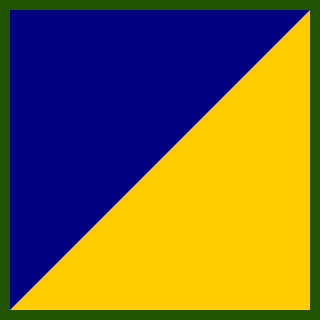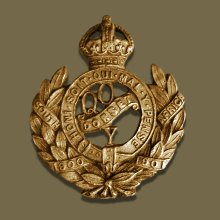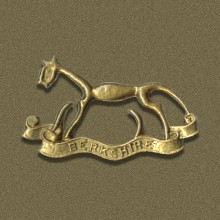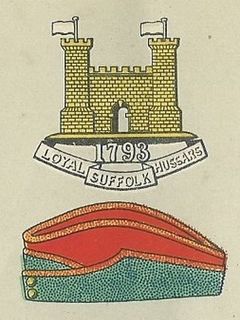 W
WThis list of regiments of the Royal Artillery covers the period from 1938, when the RA adopted the term 'regiment' rather than 'brigade' for a lieutenant-colonel's command comprising two or more batteries, to 1947 when all RA regiments were renumbered in a single sequence.
 W
WThe Edinburgh City Artillery was a part-time unit of Britain's Volunteer Force raised in the City of Edinburgh in 1859. It was the parent unit for a number of batteries in the later Territorial Force, including heavy batteries of the Royal Garrison Artillery that fought on the Western Front during World War I. It later formed a heavy regiment that served in the Battle of France and the campaign in North West Europe during World War II, while a spin-off medium regiment fought in Sicily and Italy. Its successor units continued in the postwar Territorial Army until the 1960s.
 W
WThe 2nd Cinque Ports Artillery Volunteers was a part-time unit of the British Army's Royal Artillery from 1890 to 1955. Raised as coastal defence artillery, it later served as field artillery in Mesopotamia during the First World War and in the Battle of France and Second Battle of El Alamein during the Second World War. Its successor units later operated as medium artillery in North West Europe, and as jungle artillery in Burma. Postwar, it became an anti-aircraft unit.
 W
WThe 4th Lancashire Artillery Volunteers, later renamed to the 4th West Lancashire Brigade, known as 'The Old 4th', was a part-time unit of the British Army's Royal Artillery founded in Liverpool in 1859. It served on the Western Front during World War I, one of its members winning the Victoria Cross at Cambrai. Between the world wars the unit pioneered mechanical traction methods. During World War II it formed three regiments that saw action at Dunkirk, in East Africa, on Crete, at Tobruk, in Burma, and in the final campaigns in Italy and North West Europe. It continued in the post-war Territorial Army until 1973.
 W
WThe Edinburgh City Artillery was a part-time unit of Britain's Volunteer Force raised in the City of Edinburgh in 1859. It was the parent unit for a number of batteries in the later Territorial Force, including heavy batteries of the Royal Garrison Artillery that fought on the Western Front during World War I. It later formed a heavy regiment that served in the Battle of France and the campaign in North West Europe during World War II, while a spin-off medium regiment fought in Sicily and Italy. Its successor units continued in the postwar Territorial Army until the 1960s.
 W
WThe 4th Lancashire Artillery Volunteers, later renamed to the 4th West Lancashire Brigade, known as 'The Old 4th', was a part-time unit of the British Army's Royal Artillery founded in Liverpool in 1859. It served on the Western Front during World War I, one of its members winning the Victoria Cross at Cambrai. Between the world wars the unit pioneered mechanical traction methods. During World War II it formed three regiments that saw action at Dunkirk, in East Africa, on Crete, at Tobruk, in Burma, and in the final campaigns in Italy and North West Europe. It continued in the post-war Territorial Army until 1973.
 W
WThe 4th Lancashire Artillery Volunteers, later renamed to the 4th West Lancashire Brigade, known as 'The Old 4th', was a part-time unit of the British Army's Royal Artillery founded in Liverpool in 1859. It served on the Western Front during World War I, one of its members winning the Victoria Cross at Cambrai. Between the world wars the unit pioneered mechanical traction methods. During World War II it formed three regiments that saw action at Dunkirk, in East Africa, on Crete, at Tobruk, in Burma, and in the final campaigns in Italy and North West Europe. It continued in the post-war Territorial Army until 1973.
 W
WThe Shropshire Yeomanry was a yeomanry regiment of the British Army, first raised in 1795, which served as a cavalry and dismounted infantry regiment in the First World War and as a cavalry and an artillery regiment in the Second World War. It was then amalgamated with the Shropshire Royal Horse Artillery.
 W
WThe Shropshire Yeomanry was a yeomanry regiment of the British Army, first raised in 1795, which served as a cavalry and dismounted infantry regiment in the First World War and as a cavalry and an artillery regiment in the Second World War. It was then amalgamated with the Shropshire Royal Horse Artillery.
 W
WThe Duke of Lancaster's Own Yeomanry was a British Army regiment that existed from 1798 to 1992. The regiment sent mounted infantry for service in the Second Boer War as the Imperial Yeomanry, between 1900 and 1902, and also saw action during the First and Second World Wars. Its lineage is maintained by B Squadron, the Queen's Own Yeomanry.
 W
WThe Duke of Lancaster's Own Yeomanry was a British Army regiment that existed from 1798 to 1992. The regiment sent mounted infantry for service in the Second Boer War as the Imperial Yeomanry, between 1900 and 1902, and also saw action during the First and Second World Wars. Its lineage is maintained by B Squadron, the Queen's Own Yeomanry.
 W
WThe Scottish Horse was a Yeomanry regiment of the British Army's Territorial Army raised in 1900 for service in the Second Boer War. It saw heavy fighting in both the First World War, as the 13th Battalion, Black Watch, and in the Second World War, as part of the Royal Artillery. It amalgamated with the Fife and Forfar Yeomanry to form the Fife and Forfar Yeomanry/Scottish Horse in 1956. The lineage is maintained by "C" Fife and Forfar Yeomanry/Scottish Horse Squadron of The Scottish and North Irish Yeomanry based in Cupar in Fife.
 W
WThe Scottish Horse was a Yeomanry regiment of the British Army's Territorial Army raised in 1900 for service in the Second Boer War. It saw heavy fighting in both the First World War, as the 13th Battalion, Black Watch, and in the Second World War, as part of the Royal Artillery. It amalgamated with the Fife and Forfar Yeomanry to form the Fife and Forfar Yeomanry/Scottish Horse in 1956. The lineage is maintained by "C" Fife and Forfar Yeomanry/Scottish Horse Squadron of The Scottish and North Irish Yeomanry based in Cupar in Fife.
 W
WThe 2nd Cinque Ports Artillery Volunteers was a part-time unit of the British Army's Royal Artillery from 1890 to 1955. Raised as coastal defence artillery, it later served as field artillery in Mesopotamia during the First World War and in the Battle of France and Second Battle of El Alamein during the Second World War. Its successor units later operated as medium artillery in North West Europe, and as jungle artillery in Burma. Postwar, it became an anti-aircraft unit.
 W
W53rd Heavy Anti-Aircraft Regiment, Royal Artillery was a volunteer air defence unit of Britain's Territorial Army from 1922 until 1961. During World War II it fought in the Battle of France and The Blitz, and later served in India, where it was converted to Medium Artillery. Postwar it reverted to the AA artillery role.
 W
W56th (Cornwall) Heavy Anti-Aircraft Regiment, Royal Artillery was a volunteer air defence regiment of Britain's Territorial Army (TA). Originally raised in 1920 as a medium artillery regiment, it was converted to the anti-aircraft role in 1932. During the Second World War, it was employed in Home Defence, in Iceland and then in India, where it was temporarily converted back to medium artillery. Postwar, it reverted to air defence until disbandment in 1955.
 W
WThe 2nd (Seaham) Durham Artillery Volunteer Corps was a part-time unit of Britain's Royal Artillery raised in County Durham by the Vane-Tempest family during an invasion crisis in 1860. It became a permanent part of the Volunteer Force and later the Territorial Force, and fought as field artillery on the Western Front in World War I. Before World War II it became an anti-aircraft unit that served in the Battle of Britain, the Blitz and in the Far East where it converted to medium artillery in the Burma Campaign. Postwar, it continued to serve in the air defence role in the Territorial Army until 1955.
 W
WThe Pembroke Yeomanry was a regiment of the British Army formed in 1794. It saw action in the Second Boer War, the First World War and the Second World War. The lineage is maintained by 224 Transport Squadron, part of 157 (Welsh) Regiment RLC.
 W
WThe South Nottinghamshire Hussars is a unit of the British Army formed as volunteer cavalry in 1794. Converted to artillery in 1922, it presently forms part of 103 Regiment, Royal Artillery.
 W
WThe West Riding Artillery was originally formed as a volunteer unit of the British Army in 1860. It served in the First World War and the Second World War.
 W
WThe 140th Field Regiment, Royal Artillery was a unit of Britain's Territorial Army formed in 1939, just before World War II. During the Battle of France, in 1940, it participated in defending Cassel to protect the British Expeditionary Force's evacuation from Dunkirk. Barely half the men escaped to England, where the regiment was rebuilt. It later served in home defence, in Tunisia, and after conversion to the medium artillery role, in Italy, where it was disbanded.
 W
WThe Pembroke Yeomanry was a regiment of the British Army formed in 1794. It saw action in the Second Boer War, the First World War and the Second World War. The lineage is maintained by 224 Transport Squadron, part of 157 (Welsh) Regiment RLC.
 W
WThe 1st Midlothian Artillery Volunteer Corps was formed in 1859 as a response to a French invasion threat. Originally it served as garrison and heavy artillery but transferred to the Territorial Force (TF) in 1908 as field artillery, in which role it served through both World Wars. In World War I it fought on the Western Front with 51st (Highland) Division. In World War II it briefly saw service in France after Dunkirk and was with Eighth Army in North Africa and Italy. Its wartime duplicate regiment served with distinction in the Burma Campaign. Postwar the regiment continued in existence until amalgamation in 1967.
 W
WThe 6th County of London Brigade, Royal Field Artillery was a new unit formed when Britain's Territorial Force was created in 1908. Its origin lay in Artillery Volunteer Corps formed in the Surrey suburbs of South London in the 1860s, which had later been incorporated into a larger London unit. Together with its wartime duplicate it served on the Western Front, at Salonika and in Palestine during World War I. Converted to the anti-tank role just before World War II it saw widely varied service during the war, while its duplicate regiment landed on D-Day. The regiment continued in the postwar Territorial Army until 1961.
 W
WThe Bedfordshire Yeomanry was a Yeomanry regiment of the British Army. Serving intermittently between 1797 and 1827, it was re-raised in 1901 for the Second Boer War. It participated in the First World War before being converted to an artillery regiment. It served in the Second World War. Its lineage was maintained by 201 Battery, 100th (Yeomanry) Regiment Royal Artillery until that unit was placed in suspended animation in 2014.
 W
WThe 115th Field Regiment was a part-time unit of Britain's Royal Artillery (RA), raised as part of the Territorial Army (TA) just before the outbreak of World War II. It served in the Battle of France and the Burma Campaign, and in the postwar TA.
 W
WThe 1st Ayrshire and Galloway Artillery Volunteer Corps was formed in 1859 as a response to a French invasion threat. It transferred to the Territorial Force (TF) in 1908 and its successor units fought with the 52nd (Lowland) Infantry Division in Palestine during World War I, and in North West Europe and Burma during World War II. It continued in the Territorial Army (TA) until amalgamation in 1967.
 W
WThe Queen's Own Dorset Yeomanry was a yeomanry regiment of the British Army founded in 1794 as the Dorsetshire Regiment of Volunteer Yeomanry Cavalry in response to the growing threat of invasion during the Napoleonic wars. It gained its first royal association in 1833 as The Princess Victoria's Regiment of Dorset Yeomanry Cavalry, and its second, in 1843, as the Queen's Own Regiment of Dorset Yeomanry Cavalry.
 W
WThe Royal Devon Yeomanry was a Yeomanry regiment of the British Army, formed in 1920. It participated in the Second World War and now forms a squadron of the Royal Wessex Yeomanry.
 W
WThe Berkshire Yeomanry was an auxiliary regiment of the British Army formed in 1794 to counter the threat of invasion during the French Revolutionary Wars. It was the Royal County of Berkshire's senior volunteer unit with over 200 years of voluntary military service. After taking part in the Second Boer War, it saw action as mounted troops in the First World War and as artillery in the Second World War. Its lineage is maintained by 94 Signal Squadron, part of 39 (Skinners) Signal Regiment. The Headquarters of the Squadron is based in Windsor, Berkshire. The Berkshire Yeomanry had a number of battle honours won from Europe to the Far East and Private Frederick Potts was awarded a Victoria Cross for service during the Gallipoli Campaign.
 W
WThe Edinburgh City Artillery was a part-time unit of Britain's Volunteer Force raised in the City of Edinburgh in 1859. It was the parent unit for a number of batteries in the later Territorial Force, including heavy batteries of the Royal Garrison Artillery that fought on the Western Front during World War I. It later formed a heavy regiment that served in the Battle of France and the campaign in North West Europe during World War II, while a spin-off medium regiment fought in Sicily and Italy. Its successor units continued in the postwar Territorial Army until the 1960s.
 W
WThe Edinburgh City Artillery was a part-time unit of Britain's Volunteer Force raised in the City of Edinburgh in 1859. It was the parent unit for a number of batteries in the later Territorial Force, including heavy batteries of the Royal Garrison Artillery that fought on the Western Front during World War I. It later formed a heavy regiment that served in the Battle of France and the campaign in North West Europe during World War II, while a spin-off medium regiment fought in Sicily and Italy. Its successor units continued in the postwar Territorial Army until the 1960s.
 W
WThe Duke of Yorks Own Loyal Suffolk Hussars was a Yeomanry regiment of the British Army. Originally formed as a volunteer cavalry force in 1793, it fought in the Second Boer war as part of the Imperial Yeomanry. In the World War I the regiment fought at Gallipoli, in Palestine and on the Western Front. The unit was subsequently converted into a Royal Artillery unit, serving in the anti-tank role North Africa, Italy and France during World War II. The lineage is maintained by No. 677 Squadron AAC.
 W
WThe 4th Lancashire Artillery Volunteers, later renamed to the 4th West Lancashire Brigade, known as 'The Old 4th', was a part-time unit of the British Army's Royal Artillery founded in Liverpool in 1859. It served on the Western Front during World War I, one of its members winning the Victoria Cross at Cambrai. Between the world wars the unit pioneered mechanical traction methods. During World War II it formed three regiments that saw action at Dunkirk, in East Africa, on Crete, at Tobruk, in Burma, and in the final campaigns in Italy and North West Europe. It continued in the post-war Territorial Army until 1973.
 W
WThe North Scottish Royal Garrison Artillery and its successors were Scottish part-time coast defence units of the British Army from 1908 to 1961. Although the unit saw no active service, it supplied trained gunners to siege batteries engaged on the Western Front during World War I.
 W
WThe 4th Lancashire Artillery Volunteers, later renamed to the 4th West Lancashire Brigade, known as 'The Old 4th', was a part-time unit of the British Army's Royal Artillery founded in Liverpool in 1859. It served on the Western Front during World War I, one of its members winning the Victoria Cross at Cambrai. Between the world wars the unit pioneered mechanical traction methods. During World War II it formed three regiments that saw action at Dunkirk, in East Africa, on Crete, at Tobruk, in Burma, and in the final campaigns in Italy and North West Europe. It continued in the post-war Territorial Army until 1973.